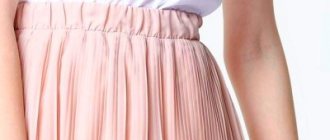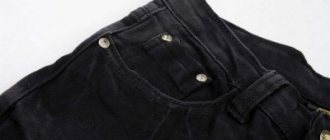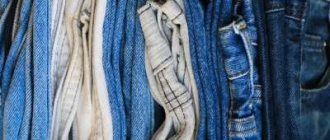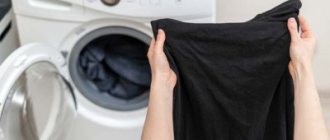Linen clothing looks very beautiful and never goes out of fashion, it is comfortable to walk in it, the fabric allows the skin to breathe. But many people are interested in whether linen shrinks when washed. Indeed, if you wash a product incorrectly, it can shrink and be hopelessly damaged. Let's look at some tips to avoid this.
Rules for hand and machine washing
As mentioned earlier, dirt from linen can be removed either manually or in an automatic machine. If the latter has a program for delicate fabrics, then this will be enough not to harm the natural material.
Temperature
Wash linen so that it does not shrink better at 30-40 degrees. This is especially true for colored fabrics, for which too hot water is destructive. Flax fibers have a porous structure, and under the influence of high temperatures, the paint begins to quickly wash out of them. The fabric fades and takes on an unpleasant, washed-out color.
The situation is simpler with completely white and unpainted material. The acceptable level for it is 60 °C. If the stain is too strong and cannot be washed at normal temperatures, you can even resort to boiling. In this case, you need to be prepared for the shrinkage to be at least 10% of the original size.
Detergents
Avoid powders and concentrates containing chlorine. It is especially common in stain removers. The aggressive impact of this substance will thin the material and it will lose its attractive appearance. If you need to get rid of stains, it is better to wash local stains with soap in advance.
It is preferable to use cleaning products with a mild composition:
- liquid gels have proven themselves to be effective when working with linen;
- for white, buy oxygen powder with a bleaching function;
- For colored or embroidered linen, products labeled as color retention are suitable.
Machine washable
Only use programs for delicate fabrics. The water temperature should not exceed 40°C for severe pollution and 30°C for moderate pollution. If the task is to reduce the size of the item, then you can stop at 90°C.
The rotation speed of the machine drum should be no more than 500 rpm
It is important that the things in the machine are not packed too tightly: flax loves it when there is a lot of water. It is optimal for the drum to be loaded to only 2/3 of its maximum capacity
Keep an eye on this when you plan to wash voluminous curtains or bed linen. Otherwise, things will not be washed properly, they will become crumpled and will not be easy to iron.
You can not turn on the spin or set it to minimum speed. High speeds may not spoil the product, but they can greatly crumple the product. But on the contrary, it is recommended to turn on the double rinse function. This way, cleaning agents are guaranteed to be washed out of the fabric.
Sort items by color. White and colored linen should not be loaded into the washing machine at the same time. Even with a delicate program, colored linen may fade a little during the first wash, which will ruin a light-colored item.
If the material has colored embroidery, then it should not be soaked, and it is better to put a handful of salt in the compartment with the air conditioner. To ensure that colored laundry retains its rich color longer, you can pour a spoonful of vinegar or citric acid into the rinse aid container before rinsing.
Manual
This is the best option for 100% flax without synthetic additives. If the material is not painted, then even simple laundry soap will do. In some cases, it will be even more beneficial than washing powder.
Algorithm of actions:
- Take a container as large as possible and fill it to the top with warm water.
- If the item requires soaking, then leave it in the water with the cleaning agent added there for no longer than 1 hour. If necessary, you can lather up particularly stubborn stains.
- Take out the laundry and place it in a separate basin, in which the powder and 1 spoon of vinegar have already been thoroughly diluted.
- Wash the product.
- Rinse thoroughly in cool water.
Powder or soap particles will oxidize and damage the fibers if they remain in them after cleaning. Therefore, it is better to carry out the rinsing process in several stages. First in plain water, and then with the addition of vinegar (at the rate of 1 tablespoon per 2 liters of water).
Most housewives are wary of washing linen, as they are sure that it will shrink. Indeed, too high a degree can reduce your item by one or even two sizes. But if you do everything correctly, it will only benefit the material.
It is more advisable to wash by hand, but if your machine has a program for caring for delicate fabrics, then this will be enough. The main rule is the temperature is not higher than 40°C and the drum rotation speed is low. Make sure that there is no chlorine in the powders and avoid bleaches.
What can be used
The industry produces a whole arsenal of washing products by hand and machine. Linen is not considered one of the capricious problematic fabrics, but correctly selected detergents will preserve the quality of the products and extend the period of use.
Regular baby laundry powder
Powders designed for children's clothing are a good choice for washing linen. The foam is quickly washed out of the fibers; the powder does not contain aggressive components that can corrode the threads. You can use powders for delicate washing. A good option for flax are gels and liquid products that do not contain chlorine or other strong substances.
Oxygen bleaches
Oxygen bleaches help restore white linen items to their original color and remove stains from colored items. Their action is gentle, they do not disturb the structure of the tissue. When removing stains from colored items, the product is first tested on the most inconspicuous part of the product.
Stain removers
You need to remove stains from linen fabrics quickly so that dirt does not penetrate inside the threads. The stain remover is tested on the internal seams, after which the item is thoroughly rinsed and dried. If there is no change in color, the product can be used.
Air conditioners
Linen fabrics become soft and delicate after numerous washes. Conditioners and balms that can be used during washing help soften new linen items.
Soda Ash
Soda ash creates an alkaline environment in which all impurities are released from the strong flax threads. This product is especially suitable for washing linen sheets - they become snow-white. Pre-soaking helps make the process easier.
Laundry soap
Laundry soap is used for washing and removing stains from linen fabrics. You can rub the stain with soap and leave it for a few minutes, then rinse the item. Grated laundry soap is added to the water when washing. After washing with soap, linen items become softer.
Potassium permanganate solution
Potassium permanganate dissolved in water in combination with laundry soap whitens yellowed linen fabrics. For 10 liters of water, take 40 grams of soap and a glass of light red potassium permanganate. Linen products are kept for 4-5 hours.
The best ways to bleach tulle at home quickly and effectively
Hydrogen peroxide
Our grandmothers used peroxide to bleach linen fabrics. For 5 liters of hot (not boiling) water, take 2 tablespoons of peroxide and a tablespoon of ammonia. Soak the linen item for 30 minutes, straightening it periodically.
Delicate machine wash
It is necessary to wash linen products at a temperature of no more than 60 degrees, if we are talking about undyed natural linen. For colored flax, the preferred temperature is 30 - 40 degrees. The number of revolutions should not exceed 400 - 500 times; at higher speeds, the item may be damaged, creases or folds that are difficult to smooth out may appear on it.
Before you start washing, look carefully at the tag, it contains a lot of useful information, such a label is on any clothing. Sometimes the clothing material contains synthetic components, therefore the product is not 100% natural. The highest temperature at which linen can be washed is also always indicated on the tag. If you are in doubt about what mode to wash linen on, you can choose the mode for washing delicate fabrics. When washing, you can use laundry soap or powder for baby clothes, which will not have an aggressive effect on the fabric. You should not use chlorine-containing bleaches; this can easily cause fabric fibers to lose their strength, and this will most likely lead to the loss of attractiveness of the outfit itself.
It will also not be superfluous to use such a function in the washing machine as an additional rinse. The better you rinse your linen item, the better it will look.
Washing colored laundry is a little different. What should you remember?
Always wash colored items separately to avoid staining other linen items. The powders and stain removers you use should be intended exclusively for colored clothing. You should also not use the spin and dry mode; do this yourself after removing the clothes from the washing machine.
Basic rules for washing linen products
Before washing, you need to decide on the type of powder. It is better to buy a simple option without aggressive components. Similar products are indicated for delicate children's underwear and clothing. Powders marked “for delicate washing” will also be suitable.
A linen tablecloth, for example, can be damaged by stain removers with a high content of chlorine. Especially if colored dresses need heat treatment with water. Oxygen bleaches are modern products for white linen, for colored linen - marked Color. Conditioners that soften water and fabric are also popular.
Soda ash with regular laundry soap is a natural method for washing linen. They wash plant fibers well by creating an increased alkaline balance in the water. The first also softens the product.
Nuances when hand washing linen
Hand wash linen
For linen items, hand washing is considered more acceptable and gentle. Therefore, sometimes they have an inscription that prohibits the use of automatic processing.
Basic Rules:
white flax is not afraid of high temperatures, it can even be boiled, after which it becomes softer and more pleasant to touch; if you give preference to powder, then it is better to choose it for automatic washing machines, because such a product does not form a lot of foam; it is important to rinse the product well in several containers or in one basin, but changing the water 3-4 times; after washing colored items, to preserve the saturation of the colors, in the last rinse use a solution of a liter of water and a tablespoon of vinegar; after rinsing, to get rid of moisture, things are not twisted, just gently wrung out with your hands; for linen clothing with embroidery, the optimal water temperature is 20 degrees, so the embroidery will not lose color, rubbing the pattern area is dangerous, otherwise the shape and quality of the weave will deteriorate; Very dirty embroidery or tablecloth should be soaked in a soapy solution of a liter of water and a teaspoon of salt for a quarter of an hour, after which time rubbed with light pressure.
Nuances when machine washing
Machine washable
Despite the advantages of manual heat treatment of flax with water, an automatic analogue is also applicable. An automatic machine is also capable of washing linen without harming the fabric or spoiling the product. You just need to remember some nuances:
- due to its heat resistance, linen is best washed at 60-90 degrees, however, the washing mode is set to “delicate” or “manual”, in which the number of spinning revolutions is from 500 to 800 per minute, if there are more of them, natural white linen can shrink;
- after washing, it is better to use the “extra rinse” mode, because powder residues on the product reduce their service life, the fabric oxidizes and becomes unusable;
- colored items must be washed separately from white ones, since each has its own temperature range and the former can fade or stain a white item;
- the drum does not need to be loaded with a large number of things, they should be washed in it freely, because linen absorbs moisture well, otherwise colored stripes will form on the fabric;
- It is recommended to wash embroidered linen, turning it inside out, turning on the “gentle wash” mode, setting the temperature to 30 degrees and turning off the spin function;
- It is better to use stain remover by applying it to the stained area, hand washing and rinsing. After this, the item is placed in the automatic machine.
Preparing for washing
If the basket is filled with numerous sets, then before the procedure they need to be sorted by type of fabric and color
.
Fabric types:
- linen and cotton.
Cotton is used to produce many types of fabric.
It perfectly absorbs moisture, washes easily and dries quickly. If cotton or linen fabric is heavily soiled, then for washing you should select a program at a temperature of 40, and if you need to thoroughly disinfect and obtain perfect whiteness, you should select a mode with a temperature of 60
. You can select the maximum spin; - satin
The material is pleasant to the touch, is of high quality and guarantees a sound sleep. It can be washed at 60 degrees. If you prefer modern powders and strong active additives for this, then the 40-degree mode will be the best option. The spin can be medium or maximum; - .
Many housewives wash silk products incorrectly, after which the fibers of the fabric deteriorate. You can wash a silk bedding only at a temperature of 30 degrees, using a water softener and medium-strength detergents, do not use bleach! It is advisable not to use the spin mode; - synthetics.
The buyer prefers durability and affordable cost.
These are the qualities that synthetic matter has. To wash it, you need to choose a mode with a temperature of no more than 30-40 degrees
so that pills do not appear on it.
Rules for washing linen
How long natural fabric is cared for depends on how long it will last.
Before you start washing, it is important to read the recommendations for washing linen. If you wash linen under conditions of using hard water and drying, the material will lose its original appearance and will become unusable over time.
Hand washing - no matter how hard technological progress tries, it preserves the appearance of the item better than machine washing. For washing in a machine, there are special modes designed for delicate washes, but they do not allow you to fully satisfy the requirements of the material for its care.
Flax reacts negatively to the chlorine content in powder or detergents. This component renders the material unusable and makes it weak. Chlorine is used in stain removers; they cannot be used with chlorine. The best way to care for linen items is to use baby powders or special products for delicate washing.
White ice is washed with an oxygen-based stain remover; if the fabric is colored, it excludes any stain removers. In order to avoid color loss, you need to know how to wash linen. Linen products may lose color and be sure to take this fact into account before washing.
To preserve color, you should use special powders for colored products, especially when it comes to linen. Like cotton fabrics, linen fabrics are washed on a delicate cycle in a washing machine using baby or delicate detergents.
Linen requires a lot of water, its washing is carried out so that the product can be rinsed freely in water, this is the rule for washing linen. The abundance of water allows you to completely rinse out the powder and not leave streaks on the product.
Linen may shrink after washing, but the elasticity of the material allows it to return to its original appearance after you wear the garment or iron the item.
When washing linen, the main thing is to rinse it well.
Reasons for shrinkage
Shrinkage is a change in the size of fabric under the influence of moisture. The product may shrink not only in direct contact with water or steam, but also under the influence of precipitation or high air humidity. True, in these cases the process does not occur so quickly and the clothes do not have time to become greatly deformed.
Fabrics can shrink at various stages of production: during cutting, sewing, or even during storage if it is not carried out properly. As a rule, in these cases, the amount of deformation is provided and taken into account when sewing products.
A much greater nuisance is the shrinkage that occurs during clothing use, since it is not possible to cope with it in all cases. The reasons for changes in the size of products after wet-heat treatment are as follows:
- The appearance of reversible elastic deformation. During the textile production process, the threads of the fabrics are subjected to repeated stretching, as a result of which they are, as garment workers say, “under tension.” During the dyeing stages, to ensure maximum impregnation, the materials are pulled onto special spreaders, and so-called elastic deformation appears in the product.
During the first wet-heat treatment, the tense fibers are weakened and the fabric shrinks. Moreover, in most cases, the product decreases more strongly in size not along the weft threads, but along the warp threads.
- Swelling of threads. By absorbing moisture during washing, soaking or steaming, fabric fibers also relieve tension. At the same time, they not only shorten, but also bend, as a result of which the clothes take on bizarre shapes. This process is especially strong in knitted fabrics.
Shrinkage is a very unpleasant phenomenon that requires extra costs from manufacturers. When cutting materials, craftsmen are forced to make allowances, which increases fabric consumption and does not always lead to the desired results.
The degree of shrinkage distinguishes not only different fabrics, but also the same material in different parts of clothing, depending on their size, the shape of the patterns and the number of stitches. Thus, small parts with frequent seams, for example, sleeves, collars or pockets, “shrink” more than large panels.
It happens that when sewing mixed fabrics that are not subject to changes in size, cotton threads are used. As a result, after washing, the product gathers unattractively at the seams and loses its attractive appearance.
Hand washing shoes
Even proper shoe care does not guarantee the absence of stubborn stains that need to be washed out. There's nothing complicated about it.
The exception to this wash is suede shoes. It is not recommended to wet it, and special products are used for cleaning.
Shoes need to be prepared; to do this, remove the laces and insoles (they are washed separately). You need to first soak them in bleach (no more than 40 minutes), rinse thoroughly and wash off stains with laundry soap.
Dry shoes are cleaned from dust and dirt with a brush. To wash the soles, you can use an old toothbrush to thoroughly scrub away any pebbles and dirt.
Dissolve the powder or detergent in warm water (40 degrees). Soak in soapy water for 20 minutes, drain the dirty water. Place shoes in a basin with clean water and use a soft sponge (brush) to thoroughly wipe the contaminated areas.
Rules for washing linen in a washing machine
The best option for washing linen items is gentle hand cleaning. If you lack time and desire, you can wash linen in a washing machine. However, here, as when washing silk, you need to use the golden rule of washing delicate fabrics - using gentle programs and modes. The water temperature should not exceed 30-40 ºC, otherwise the paint will wash out. Leave the spin at 400-500 rpm. At high speeds, the fabric can “chew” and form unattractive folds that are difficult to iron.
About the “correctness” of powders
When choosing a cleaning product, look for soft liquid powders. For white linen clothes, you should choose oxygen powder (bleaching)
For colored products, buy a color preserving compound marked “Color”.
Before use, be sure to study the composition of the product
Use chlorine-containing powders and stain removers with caution. Colored fabrics require special care
Simple rules
- Do not overload the machine drum by filling it 2/3 full. Sort clothes by color and material type.
- Use covers to wash clothes, filling them halfway. The case will help keep the appearance and fittings intact.
- Linen is absorbent, so it can be washed in a large amount of water, and it is advisable to turn on the additional rinse function. Powder residues on fabric can significantly shorten the life of the product.
- If you don’t have a suitable powder on hand for colored items, add a couple of tablespoons of table vinegar or citric acid to the tray instead of rinse aid.
- Follow the instructions on the label indicating at what temperature to wash linen and what mode to use when ironing.
- Dresses and shirts with embroidery should not be soaked or boiled. Add salt to the rinse aid compartment.
- Hard water, aggressive washing powder and too long drying are the main enemies.
How to wash linen without shrinking?
The truth is that 100% natural linen shrinks under any conditions. If the material contains synthetic fibers, then the degree of shrinkage is small, and immediately after trying on the item returns to its usual size. To return natural fabric to its original state, it is enough to iron it through thick cloth or gauze folded several times.
The final size and appearance largely depend on the delicacy of drying and ironing.
If a linen item shrinks
This can happen due to improper heat treatment of the fabric. If your linen items shrink after washing or improper drying, do not be upset. You can try to return them to their original size. To do this, you will have to soak the product in warm water, then, without squeezing, hang it on a rope or hanger. When the fabric is slightly damp, iron it. When ironing, you must carefully pull the material with your hands to the size you need. Use a finely dispersed spray bottle, as the fabric must be kept damp at all times. At the end of ironing, hang the item on hangers for final drying.
How to wash linen correctly?
Fabric woven from natural linen fibers is extremely vulnerable. It is useful to know what risks linen items face during water procedures.
Shedding
Violation of the care rules can lead to a change in the color uniformity of the fabric - it may fade. That is why it is recommended to use powders to which special granules are added to preserve color. Also suitable for delicate fabrics. Recommended:
- Use large volumes of water. The more it is, the less likely it is to change color. There should be enough water for things to float freely in it.
- If you are using an automatic washing machine (CMA) or an activator machine, you need to load the tank to 2/3 of the maximum load.
- To be on the safe side, it is better to use special bags - they need to be filled to 50% of the volume.
- Rinsing should be repeated and thorough. To make the color of the painted material brighter and more saturated, vinegar is added to the water.
At what temperature?
The ideal washing temperature is 30-40°C
This is especially important if the material is painted. Too hot water will ruin the color, and boiling water can completely leave the fabric without it.
To find out the exact temperature limits, look at the icons on the label.
Removing stains
There are stains that cannot be washed off with conventional means. It will be easier to remove them if you start removing them immediately after they appear. Before using the stain remover, you need to do a test - soak an inconspicuous area of the fabric in it. After waiting 5 minutes, rinse the wetted area. If there are no color changes, the stain remover is good; if there is, you need to look for another product. It is not recommended to pour stain remover into the washing machine - it should be used locally, and then thoroughly rinse the treated items.
Does linen shrink when washed?
Material without synthetic additives is prone to shrinkage after exposure to water. This problem is not critical - the clothes quickly return to their original sizes when worn. To speed up the process, iron through thick fabric. How to wash linen items without shrinking? Yes, just don't use hot water. Wash only in water at the recommended temperature - 30-40°C.
How to dry?
It is not recommended to wring or twist natural fabrics. Water is removed by smoothing the product and hanging it on hangers. Drying Tips:
- The room must be ventilated;
- Avoid direct sunlight - flax fades in the sun;
- Don't close the windows. The lack of oxygen will negatively affect the appearance of the products - shrinkage will occur;
- Do not allow it to dry out - a little moisture is necessary for ironing. Ironing slightly damp items is much easier;
- Iron with a well-heated iron. Finish ironing at the moment when the material becomes perfectly even and smooth, but there is still a minimal amount of moisture in it. Afterwards, the clothes are hung up to dry or laid out horizontally.
Adding synthetics will make it easier to care for things - they are easier to smooth out and do not shrink. But such fabrics still lose their main advantage - they can no longer be called natural and hypoallergenic.
What can cause a thing to shrink?
Linen shrinks when washed in cases where it does not contain any synthetic additives. This almost always happens after the first soak. This problem is not critical, since during wear the material will again return to its original dimensions.
The situation is more complicated in cases where the temperature regime was severely violated. Washing linen at temperatures above 50°C is highly not recommended; this may cause your favorite item to never return to its previous size. Too hot water can make a shirt or dress at least one size smaller, which means it will have to be put away in the closet for a long time.
Also, linen items do not like bleach. Some manufacturers generously add it to their washing powders and this must be monitored closely. Bleaching agents corrode fabric fibers and lead to significant shrinkage of linen.
Properties of flax
Linen is translated from Latin as “the most useful”, this is no coincidence. It is considered one of the first “domesticated” plants and is valued for its medicinal properties. Thanks to the luxurious amount of vitamins and beneficial substances in its composition, flaxseed exhibits antibacterial and even antifungal properties.
For women over 30, flax seeds can reduce the risk of breast and intestinal cancer. In addition, the beneficial plant improves skin and hair color, not to mention its benefits for the intestines.
However, flax is used not only for treatment in folk and official medicine, but also for the manufacture of natural summer fabric. The sharply increased popularity of such material is understandable - more and more people are striving to be closer to nature. Linen is best suited for this.
Due to its properties, it is used in many areas. This can be either tailoring or making bed linen, tablecloths, etc.
What to do when shrinking viscose
Often, the rules for caring for any fabric begin to be studied after the item has deteriorated. Fortunately, shrinkage is not the worst thing that can happen to viscose. In most cases, the situation is fixable.
3 ways to return a shrunken product to its original shape:
- Steam. When processed with hot steam, the fibers are pulled out and the viscose is stretched. The main thing is not to overdo it with steaming. You should steam the entire perimeter of the product, act quickly, and do not pull the fabric with your hands in different directions.
- Put on a damp item. Wet viscose is quite pliable and easily stretches on a warm body. The downside is that she can stretch out on her elbows and knees.
- Using a hairdryer. The wet product is placed horizontally, stretched well and evenly, and then dried with a hot stream of air.
The listed methods cannot be called ideal. If the viscose not only shrinks, but is also noticeably deformed, it will no longer be possible to return it to its original appearance.
Washing sequence
Rule 4. Hand washing steps
Any hand wash, regardless of the number of items and characteristics of the fabrics being washed, consists of several stages.
Instructions
will help you provide for all the nuances and simplify the task:
| Image | Procedure |
| Step 1 Decide on where to wash. The best places for this are rooms with access to water - a bathroom or kitchen. If you are going to wash clothes at your dacha, a bathhouse will do. Direct access to water will save time and effort. | |
| Step 2 Sort your things. Place bedding and underwear, children's and adult clothes, light and dark things in different directions. If you are going to wash wool items, turn them inside out. Also don't forget to check your pockets! | |
| Step 3 Prepare containers for washing. It is best to get at least two basins - one for soaking and washing, the second for rinsing. A sink with a stopper or a bathtub will also work. | |
| Step 4 Prepare laundry detergents depending on the type of fabric and the purpose of washing. | |
| Step 5 Dilute the chosen product in water according to the dosage indicated on the package. Before washing items by hand, allow the powder to completely dissolve in water. | |
| Step 6 Be mindful of the water temperature. Cotton and linen should be soaked in hot water, wool and silk - in cold water, colored items - in warm water. | |
| Step 7 Place items in a basin with water and detergent. Lightly rub the material together. | |
| Step 8 Leave the soaked items for a while . Heavily soiled items can be soaked for 2 hours, bed linen - overnight. Do not let soaked items smell bad, otherwise you will have to start washing again. | |
| Step 9 Heavy soiling It must be washed before soaking. Especially the collars and cuffs of shirts, the bottom of trousers, etc. Rub the items together again and place them in a bowl of clean water. | |
| Step 10 Rinse the laundry after washing , constantly renewing the water until it becomes completely clear. If desired, add fabric softener to the water at the dosage specified by the manufacturer. | |
| Step 11 Gently squeeze out excess water and put things in an empty basin. Now they are ready to dry. | |
| Step 12 All you have to do is hang the laundry until it dries completely. . It is better to dry things in the fresh air or in a well-ventilated area. |
Rule 5. Delicate hand wash
Washing delicate fabrics requires special attention.
Fragile and delicate materials can only be washed in cold or lukewarm water
with the addition of a small amount of detergent. For example, 1 tablespoon of powder per 5 liters of water.
Note :
- silk and lace fabrics
in liquid detergents for delicate washing; - batik and embroidery with woolen threads
can only be washed in cold water; - if you use bleach or stain remover for washing
, add a tablespoon of hydrogen peroxide to the water; if you wash an item with embroidery, add a tablespoon of lemon juice or vinegar.
Delicate items should not be actively rubbed or rinsed.
. Therefore, I recommend following this washing sequence:
- Dissolve the powder in water.
- Place dirty items in the basin
and leave for 5-10 minutes. - Carefully, without twisting or shaking, transfer the items
into a bowl of clean water.
- Leave for 5 minutes.
- Place items in clean water and rinse gently.
- Lay out a terry towel and place the washed items on it
so that the water is absorbed.
- If the fabric is subject to deformation
(may stretch), leave the item in a horizontal position, replacing the wet towel with a dry one if necessary. If there is no such threat, hang things up and dry them at room temperature.
What to do if clothes shrink after washing
For items made from pure linen, shrinkage is a natural phenomenon, depending on the temperature of the water during washing. The hotter the cleaning solution, the greater the deformation of the product.
Returning to the original size is quite simple: the clothes need to be dampened and then immediately ironed at maximum temperature. Iron with stretching movements, observing the direction of the threads. If it doesn’t work the first time, the operation should be repeated.
For items made from mixed fabrics, the heating of the iron is selected depending on the composition of the material: mode for synthetics or artificial fabrics. If the tag is lost, or it is not possible to determine what the fabric is made of, then the iron is turned on to the minimum setting and gradually warmed up.
The ironed product is left to “rest” for 30-60 minutes so that the fibers cool and take on their natural shape.
Selecting the mode and temperature of water heating
If washed incorrectly, linen may lose its color and become stiff.
The best option for cleaning linen products is hand washing. A faster, but less gentle method in relation to the fabric itself is washing in a washing machine at low speeds.
The maximum temperature at which linen items should be washed is 40 °C. If the item is colored or has dyed areas, it is better not to increase the washing temperature above 30 °C. This is due to the porous structure of the material, which, when exposed to high temperatures, does not retain the dye well and rejects it.
When washing linen, the use of chlorine or chlorine-containing bleaches is strictly prohibited. If there is a compelling need for bleaching, it is recommended to use environmentally friendly bleaches containing sodium percarbonate, which effectively remove stains from fabrics using oxygen.
How to wash colored linen items?
Choosing the right temperature is the key to successfully washing linen items.
Colored linen items can lose color during washing. Especially if the temperature regime is violated and the wrong detergent is chosen. To preserve the original color of the product, it is recommended to use washing powders that contain special colored granules.
Such particles are included in almost all compositions created for cleaning delicate, thin or colored fabrics.
When spinning linen items, it is advisable to include an additional rinse mode in the washing program. This will remove excess detergent particles. When rinsing colored linen items, you can add a “cap” of conditioner - this will add softness.
When washing by hand, you should remember the following nuances:
- Washing linen requires a large amount of clean water, since the material itself has high absorbent properties.
- After cleaning, you should rinse the item under running warm water (3-5 minutes) or in a small basin with constant change of water. This will rinse out all the powder and detergent particles.
- When rinsing colored items, you can use a little vinegar. This will restore the brightness of the colors and make the fabric softer.
If the linen item does not contain various synthetic additives, this may cause slight shrinkage, which will disappear after an hour of wear. In order not to wait for natural stretching, you can steam the item through damp gauze.
What to do with stains?
If the stains are fresh, then removing them will not be much of a problem.
There is nothing difficult in removing stains and dirt from linen items. In many ways, the cleaning process greatly depends on the nature and freshness of the contamination. The fresher the stain, the easier it is to remove it from the structure of the material.
To do this, a drop of stain remover is applied to the reverse side of the product. After 2-3 minutes, the product is removed according to the instructions. If the color has changed even a little, then the composition is not suitable for a particular item and its use will do more harm than help remove stains.
In addition to applying the stain remover to the fabric itself, you can add 1-2 measuring containers directly to the drum of the washing machine. After finishing washing, it is recommended to carry out an additional rinse.
Basic rules for drying and ironing
Improper drying and ironing of linen items can lead to the product quickly losing its shape, fading, or even tearing due to accidental movement.
To prevent this, there are a number of important points to remember:
- During the spinning process and before drying, do not twist the linen item.
- To prevent shrinkage, items should be dried in a well-ventilated area, on a balcony or loggia, protected from direct sunlight.
- Ironing should occur before the fabric is completely dry. If necessary, you can use damp gauze or other steaming cloth.
- Using the steam or humidification function is highly recommended. The use of manual or stationary steamers is allowed.
The product should not be ironed until completely dry. After removing the wrinkles from the front side of the item, hang it up or lay it out until it dries completely naturally.
Removing stains
You cannot wash linen in hot water, otherwise the product will shrink greatly and be damaged. Therefore, if a stain has been planted, you should use the following advice: soap the contaminated area with laundry soap, then soak in the powder for an hour and then wash. The fresher the stain, the easier it is to get rid of.
The table shows the most popular methods for removing stains from linen products.
| Type of spot | How to withdraw |
| Blood | Having planted such a stain, you should immediately rinse the product in cold water. |
| Wax | First, the wax should be cleaned off by hand, then apply a napkin and walk over the damaged area with a heated iron - the straightened wax will be removed. |
| Ink | Soak the damaged item in milk, place it in the refrigerator overnight, then wash as usual. |
| Red wine | You should act as quickly as possible. White wine or sparkling water will help remove stains. After such express cleaning, the product should be washed in warm soapy water. |
| Coffee, tea, chocolate | Take 2 tsp. glycerin and ½ tsp. ammonia, apply this solution to a swab or cotton swab and wipe the stain with it. |
| Berries and fruits | Vinegar (9%) will help get rid of stains. Take a cotton pad or swab, moisten it with vinegar, then wipe the damaged area. |
| Fat | A fresh stain can be removed using ammonia - it is poured onto a cotton pad, which is used to wipe the stain. If the stain is already old, it is best to use table salt - the product is soaked in soapy water with the addition of ½ cup of salt, then washed. |
Washing linen items and removing stains from them is not difficult, but the main thing is to remember: the sooner you start removing stains, the greater the chances of getting rid of it.
How to wash without ironing
If you did not use strong chemicals to wash your clothes, then you don’t have to iron the items. Just shake well and hang the canvases carefully outdoors, but not in bright sunlight.
If ironing is necessary, then the materials should be ironed slightly undried on the reverse side, especially if there is a pattern.
Knowing all the rules of washing, housewives will be able to achieve incredible coziness and comfort in their home!
Washing bed linen is, at first glance, a simple task that does not require a lot of knowledge and practice. They are a must-buy for those who want to learn how to properly wash bed linen more than once so that it retains its original fresh shape and colors. Housewives have always done this at home - by hand, when the bed was still produced strictly white and it was easier to learn how to wash it. Today the bedding market offers us a variety of fabrics, colored and mixed linen; You can buy a duvet cover or pillowcases separately. Let's see how to take care of all this correctly.
Bed linen should always be clean, so you need to learn how to wash it correctly
If you have purchased a set of bed pillowcases for the joy of yourself and your household, then immediately after this the question arises, how should you wash it at home? By hand or by washing machine? Very often and in what mode in the machine? At what temperature, is it possible with a duvet cover? General tips will help us with this, which are best familiarized with before the first wash at home:
Even at the stage of unpacking our pillowcases or duvet cover, you should immediately put aside and keep at home the label, where the manufacturer tells you how to properly wash such linen, i.e. general recommendations for product care. The weight of the dry set can also be indicated here - this will be useful to us in the future. If the pillowcases that we are going to wash well are decorated with bright embroidery, then before washing them in the machine they need to be placed in a washing bag - you can buy it in departments that sell detergents for washing, ironing, cleaning, etc. To wash pillowcases, it is better to purchase a large bag. You can do without it if you plan to wash it by hand. It is recommended to turn colored items inside out. This way, our colorful pillowcases and duvet covers will remain bright for a long time, and the pattern will remain clear. From the inside it will not come into contact with the walls of the machine and other laundry, i.e. friction will be reduced to a minimum. Small debris and dust, lint from blankets and pillows, constantly accumulate in the corners of a pillowcase or duvet cover. You can wash the product well by first shaking it all out before washing, both manually and in a washing machine.
This way you will protect the pump and filter of the machine from clogging. It doesn’t matter what temperature the machine was when washing, a new set always shrinks, especially if it is made from natural fabrics. So don’t be upset if this happens – it’s normal.
Calico and cotton will shrink regardless of whether you washed them by hand or in a special mode in a washing machine. Despite the assurances of advertising, conditioners and rinse aids, especially if the laundry is often processed in a washing machine, reduce the strength of the material. Therefore, this should not be abused. If you like to leave your laundry care to the washing machine, then do not mix different fabrics. Polyester will cling to the fibers of natural products, thereby making them more rigid. This especially applies to satin. The washing machine drum should be half loaded. You can put two duvet covers instead of three, especially if the linen is heavily soiled. This way the washing will be more effective, the items will be wrung out better and will be easier to iron. If possible, it is better to dry your duvet cover or pillowcases outdoors, under the sun. If you do this often, turn out the colored ones so they don’t fade. The ultraviolet rays of the sun will disinfect linen - this is important for children's clothes. It is recommended to iron them at high temperature, paying attention to the seams. To the question, how often is it better to wash the bed? If this is children's underwear, then it is better to do this once a week or two, and for adults, once a month is enough.
How to dry viscose clothes
You can dry viscose clothes vertically, but not on a line. It leaves creases, and besides, the wet fabric is heavy, the rope bends, the material hangs unevenly and becomes deformed. For vertical drying, it is better to use soft hangers. If the item is large, heavy, or has already stretched when wet, it is better to dry it on a horizontal surface. To prevent the process from taking much time, cotton blankets, bedspreads, and terry towels are usually laid underneath, which absorb moisture well.
Important! Viscose should never be dried in the sun or on heating radiators, or near other heating devices.
How to wash linen items?
The structure of woven fabric is easy to damage, so the best option for linen products is hand washing. Linen has a great advantage - with each subsequent wash it becomes softer and more pleasant to the touch. The main thing is to observe the temperature regime and use good detergents.
Hand wash
This is the best option for natural fabrics. Procedure:
- Stains must first be removed with a stain remover;
- Check your pockets and remove any unnecessary items. Fasten the zippers;
- Fill the basin with warm water, dissolve the powder in it;
- Soak white items for 30 minutes. Wash colored ones without soaking;
- Wash with care;
- Rinse several times until the powder is completely removed;
- Don't push. Hang or lay out to dry.
How to restore the size of a shrunken product?
If after washing the linen item shrinks slightly, then there is no need to worry. You can return it to its original size using a regular iron by ironing the product through damp gauze.
When the shrinkage is 1-2 sizes, you can resort to restoration methods such as:
Soak the product in a cool solution of hydrogen peroxide (1 tsp of product per 1 liter of water). After half an hour, the product is rinsed and dried on a flat surface, periodically pulling the fabric out with your hands.- Water. Lightly moisten the clothes using a spray bottle. In this form, they put it on the body and walk until it is completely dry.
- Soak the cloth in hair conditioner. For 1 liter of water take 1 tbsp. l. products and soak the shrunken fabric in the solution. After 15 minutes, the laundry is rinsed and sent to dry, laid out on a flat surface. Periodically, the fabric needs to be stretched by hand.











